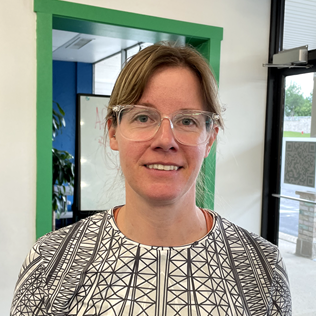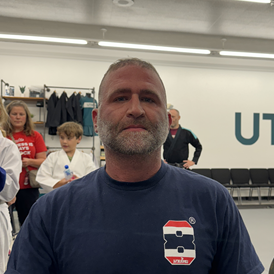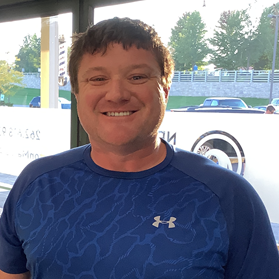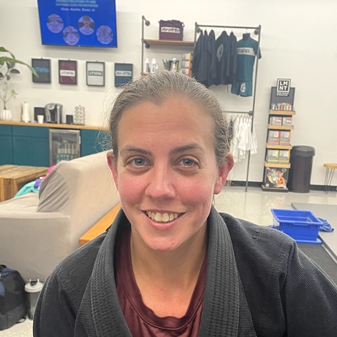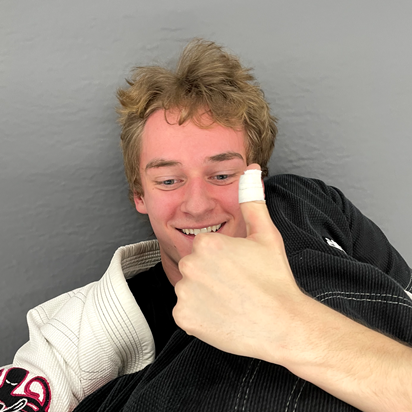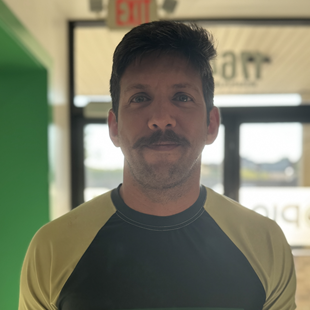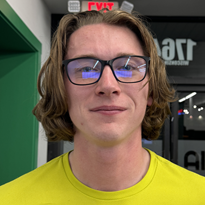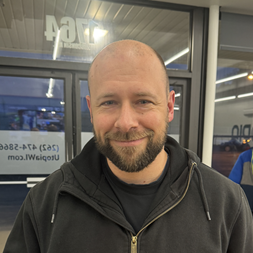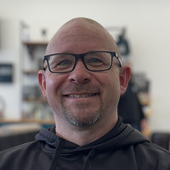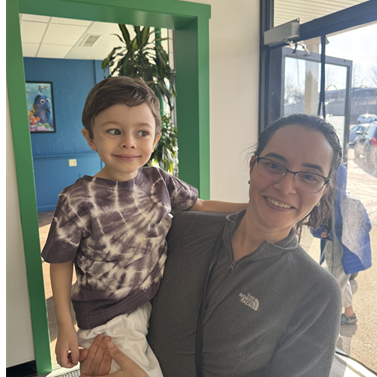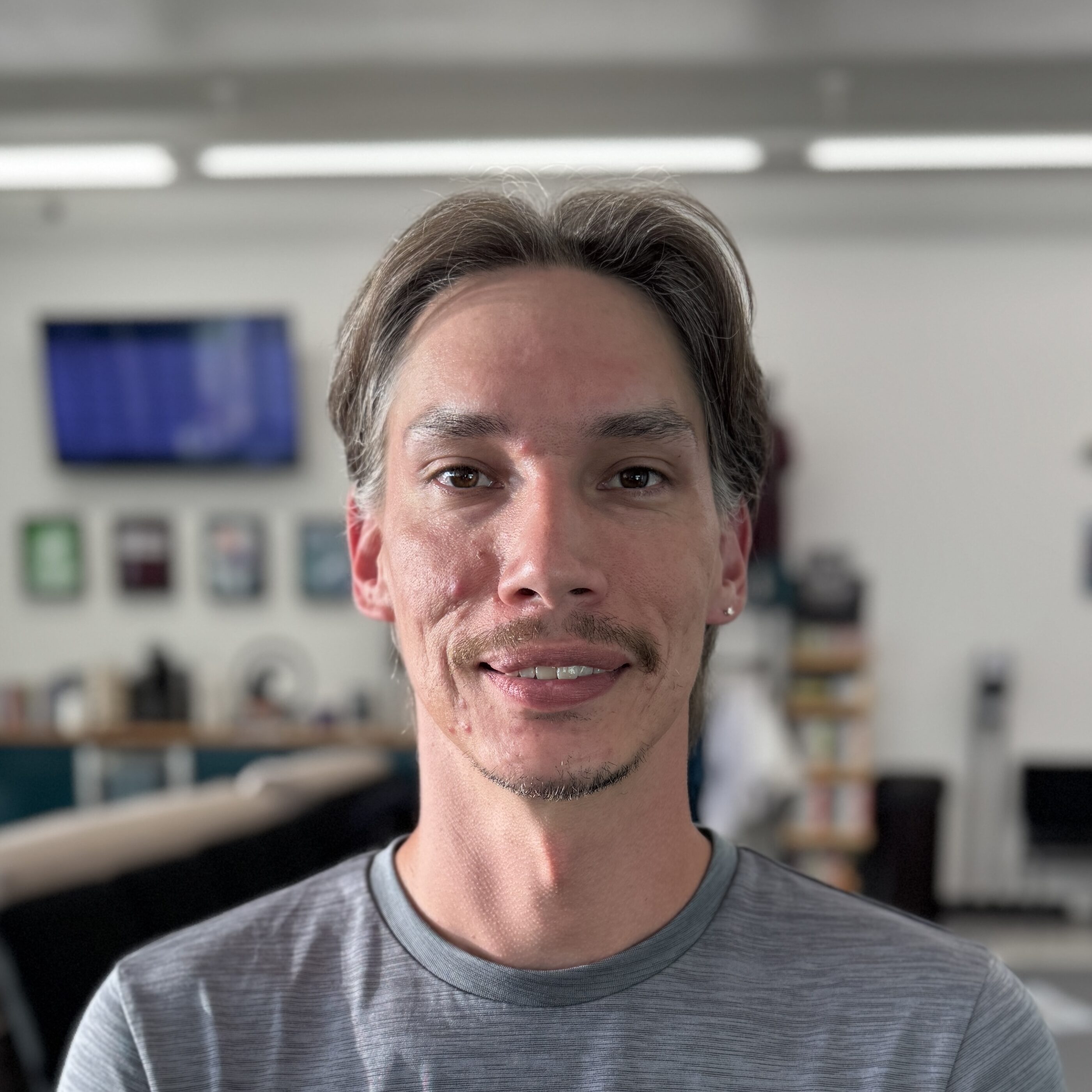In this episode of Inside the Wave, I had the pleasure of sitting down with my friend Dan LaSavage, the founder of Combat Corner, a company that has grown significantly since its inception in 2007. We delved into the fascinating journey of Combat Corner, from its humble beginnings in a small shop next to an Indian restaurant to its current status as a major player in the combat sports equipment industry, operating out of a 30,000 square foot facility and serving athletes worldwide.
About Dan LaSavage
Dan LaSavage’s entry into the combat sports industry was somewhat serendipitous. Early in his professional fighting career, an unfortunate incident left him with a broken jaw, forcing him to take time off from fighting. During this downtime, Dan noticed a significant gap in the market for high-quality combat sports gear. His entrepreneurial spirit kicked in, and this realization led to the founding of Combat Corner. What began in a modest space next to an Indian restaurant quickly grew, thanks to Dan’s deep understanding of fighters’ needs and his commitment to producing top-quality equipment.
Dan’s philosophy is centered around continuous improvement and innovation. He approaches product development with the mindset of treating gear like software—constantly updating and refining to meet the evolving needs of athletes. His hands-on involvement in the design and testing processes ensures that every product upholds the highest standards of quality, which is a hallmark of Combat Corner’s success.
Beyond business, Dan is deeply committed to giving back to the community. Combat Corner actively supports various local organizations and provides space for nonprofits to use for training and events. Dan’s passion for combat sports extends to nurturing the next generation of athletes, and his efforts in supporting youth wrestling programs and other community initiatives have made a lasting impact.
What You’ll Learn
- The Origin of Combat Corner: How a broken jaw incident sparked the creation of Combat Corner and Dan’s journey into the world of combat sports gear.
- Evolution of the Combat Sports Market: Insight into the early challenges of sourcing high-quality gear and how Combat Corner addressed the demand.
- Product Innovation: Dan’s approach to constantly improving and innovating his products, ensuring they meet the high standards of athletes.
- Challenges in Manufacturing: How Combat Corner navigates issues like sourcing materials and maintaining quality control with global vendors.
- Community Impact: Dan’s dedication to supporting local youth programs and combat sports nonprofits, emphasizing the importance of giving back.
- The Growth of Wrestling and Jiu-Jitsu: How women’s wrestling and jiu-jitsu have seen explosive growth and Dan’s involvement in youth sports through his daughter’s journey.
To explore more about Combat Corner’s innovative products and stay updated with their latest developments, visit their website or follow them on Instagram.
Transcript
Perry:
Welcome to the next episode of Inside the Wave. Today I am joined with my friend Dan LaSavage, founder of Combat Corner. Started in 2007, yeah? That’s correct, 2007.
Dan: March, I think March 2007, maybe May.
Perry: Out of a building that was also a, was it a Thai restaurant right next door?
Dan: It was an Indian restaurant. It’s still there. I stopped in there like about a month ago. That’s funny.
Perry: I bought my first pair of Nogi shorts there probably in 2007. Did they smell like curry? They definitely smelled like curry. Clinch gear grappling shorts. And it was like the first pair of shorts that were made for Nogi Jiu Jitsu. And you guys have grown a ton since then. You started as like a little shop catering to the local businesses and local athletes, and now you’re in a 30,000 square foot facility, huge team, several different countries, and doing a lot of different things. What made you want to get started in Combat Corner? I know you’re a fighter.
Dan: Yeah, I mean, truthfully, the only reason this company even exists is because I got my jaw broke. Sorry about that. I got my jaw broke and it was weird shot. Wasn’t it? It was weird. I remember that. Yeah. So I had time off. I, I, I was early in my professional career. I think that I had like four fights at the time. Um, and I, it, it wasn’t in a legal competition. Someone punched me in the street and it broke my jaw. Um, and, uh, so during that time off, I tried to continue to train, but I kept losing too much weight because I wasn’t taking enough calories. So I was like doing nothing. So one day we were driving around and I’ve, I’ve had all sorts of little businesses throughout, you know, my history. And, uh, It was just one of those things, like we were talking about gear and equipment within the space and how you couldn’t get anything that was good. And there was no, no availability whatsoever. And I mean, it was, it was like that. It was kind of just. Almost ridiculous how it came from nothing. There wasn’t like a big plan put into place because we were talking about it. We saw a space that was empty and in three weeks we were open.
Perry: Yeah. So to, to kind of frame what 2007 was like, at least from my perspective as a, an athlete, I didn’t own my academy yet, but I started jiu-jitsu in 2007. I was a fresh white belt. Uh… If you wanted a jiu-jitsu gi, there was a local judo place that made judo gis, but for jiu-jitsu. And like, that’s where everyone got their gi from. My first gi was from there too. The only other place that you could really get a jiu-jitsu gi was like at a tournament and you go to a tournament and Gameness had a booth there and you would buy a gi from that tournament. And e-commerce wasn’t big yet either. Like we didn’t hit a huge e-com boom where you could just go online and there are a million manufacturers of equipment. If you wanted a pair of gloves, they were consumer level, everlast ones from whatever sport Dunham’s sporting goods was probably around back then. So you guys recognizing the growth in the sport was like, Oh, people need better equipment. Yeah.
Dan: That’s I mean, that’s exactly the case. So like throughout that training, we were bringing in a lot of stuff from Thailand, like we were training with Wendy and twins and in various Thai brands, because that, in my opinion, not only then, but now, you know, the Thais make some of the best equipment in the world. was something you couldn’t get here. Like there was, there was even, even online, there was really not a lot of places to buy authentic, you know, time aid gear here in the United States. So yeah, like most people would be, you know, going into like, you know, we didn’t have Dick’s even back then. Dick’s wasn’t even around here. That was, uh, it was like sports authority and stuff like that. And you’d get the cheap Everlast gloves and that’s what people were training in. So, you know, knowing that there was nowhere to get the stuff that gave us that, and then it was really setting up those relationships with the vendors that made those products that were at a pro level, pro-grade product, including Gameness. Gameness is now owned by Century, so they’re not good, so don’t buy Gameness. But Gameness at one time was one of the innovators in the U.S. space for jiu-jitsu uniforms.
Perry: Yeah, awesome. And with all the growth that you guys have had over the years, you have fighters and essentially every single fight league Bellator UFC, one, all that stuff, a lot of top tier jiu-jitsu athletes. I know you’re also doing a lot of wrestling. So you have a daughter in wrestling. So now you’re doing singlets and wrestling warm ups and all that gear. And you’ve also given a lot back to the community with tournaments and helping local organizations, giving them space to do training and helping with equipment and stuff like that. So you could tell that you’re seriously passionate about really helping the entire industry level up as a whole.
Dan: Yeah, I mean, combat sports, this industry is my life. I mean, you know, once I jumped into it, it consumed everything and then it still has to this day. And there’s always things that are opportunities for more. It’s not individually just about, you know, me or my brand. Like you said, with the current gym situation we have at our headquarters, that was purely built for the nonprofits to use. Now do we use it for some other things? Like we run some open mats, we do some seminars or things like that. But in general, it was built for city champs and it was built for a youth wrestling club, all of which are free. Actually, the youth wrestling club does have a small fee now, but it is a nonprofit. But the city champs program is 100% free and it services the north side of Milwaukee, which is one of the most underserved areas in the whole city.
Perry: And I think your open mats are really cool because a lot of times open mats are held on someone else’s turf. It’s still an open mat and most people in the community are really cool with each other, but I think it’s really special having this neutral area that people can just come and grapple or kickbox or whatever it may be.
Dan: I think people feel that way too, when they come in, cause you’ll see a lot of other open mats. It’s going to be heavy for the gym. No home court. Yeah. It’s going to be heavy for the host gym. And then there might be a couple of people from other gyms, but really with ours, it’s, it’s, it really is, uh, you know, cornucopia for utopia, but, uh, but in general, uh, a lot of people coming from a lot of different places and it’s one of the best ways to kind of. see that what you’re doing at your gym transfers over with people that aren’t people you roll with on an everyday basis or aren’t being taught that same kind of either technique basis or, you know, even if you’re at a gym that doesn’t teach technique.
Perry: Yeah. So you briefly talked about Thailand having some of the best equipment. So let’s let’s take a perspective on like shitty equipment. Yeah, shitty gear shitty apparel Whatever it might be and like the best what do you think are? When you say something that’s like really high quality. What are you looking at? From a what a vendor perspective because you sold a lot of other people’s equipment But now you make a lot of your own out of a bunch of different places including the u.s. So like what makes a good product and
Dan: So when I talk about one country making good stuff, there’s a lot of countries that can make really good stuff. And in fact, any country can make really good stuff. It comes down to who’s running the operation, what equipment’s available, the raw materials, and then the systems that are in place. So that’s why major brands can leave one country and go to another country. Not really in our space, but let’s say like Nike. Nike can be like, no longer operating in Vietnam. Now we’re going to operate in Nicaragua. They can do that. So it really doesn’t come down to the country. The reason that whole tie end when we’re talking about tie boxing equipment is, you know, that’s the national sport there. So they have a true understanding of the product beyond just making the product. A lot of the resources are there because of that reason. So that makes it like, you know, an easy spot to start with, but there’s other great places making great products. And that’s the same thing with us. When we started doing our products, it was finding out who did what best. And that’s why starting as a retailer, it was very easy to find that out. We carried all the other brands. We found out their sales process, their marketing processes, their products themselves, feedback from customers that was unbiased. Because in general, a lot of people are going to tell you if they know it’s your product, they might be sensitive to you, right? As opposed to like, if it’s someone else’s stuff, they’ll tell you straight up, they’ll be like, that product’s really great or that product sucks. Yeah. So we learned a lot from that. We took all the best pieces of each thing, sales process, marketing, product, you know, creation. And then we started that way, right? And that’s why I think earlier before on camera, I was talking about that imitator phase. I think most people in product design, branding, whatever, start as imitators. Same with music. They start imitating, and then eventually they start innovating. And then eventually it becomes their own. We’ve been in business 18 years now, so pretty much everything is our own. And those phases of imitation we see heavily based on our stuff now. So I don’t get too mad about it. We just keep moving. So our stuff is ever-evolving and ever-changing. So usually by the time our stuff is kind of duplicated or copied, we’re already onto something else anyways.
Perry: Where do you typically see other brands and other manufacturers falling short of having great products? Is it material? Is it quality of how it’s put together? Is it potentially false advertising?
Dan: I mean, it could be all of those things. It really can. And depending on the brand, I could probably point out each one that they’re failing at. And I’m sure other brands could point out ones we’re failing at. But in general, when it comes to the product itself, a lot of it’s going to be related to cost. A lot of it’s going to be related to a company’s, I’d say, tenure. How long have they been around? If they’ve been around a long time, which we have too, but we don’t rest on that. A lot of companies, they make something and that’s it. They rest on that. They’ll make that same product for like 15 years, never improving it. we treat our products kind of like software without calling them point O’s and stuff like that. So if you got this product and then let’s say 09 and we’re still making that same product now, it’s going to be different. It’s just been updated throughout time. It doesn’t have a model year. I mean, it’s kind of like Tesla, right? They just keep updating it. And that’s the approach we’ve always had. And when we started small, it was very easy because we didn’t have crazy production runs where we got stuck with a bunch of garbage. If we had a small run and something was wrong, We might, you know, throw it away, liquidate it, whatever, and then fix it onto that next run.
Perry: Yeah. I remember that, you know, even as a, as a gym owner, and I’m sure a lot of gym owners have this as well, but we’ll go off on our own and do something like direct with another country. Right. And you get something in and you’re like, this isn’t what I expected. Right. The colors are off or the cuts are a little weird, but like, you don’t have any pull with that vendor. You’re stuck with it.
Dan: Yeah, not even the poll with the vendor, but a lot of people don’t understand there’s much more in the process than designing something in Photoshop or in CorelDRAW or something like that and sending it over and getting exactly what you wanted back. You may get lucky. We’ve had customers that get lucky and then all of a sudden they get burned and then they come back. The thing is, yes, we have a lot of control. We have a lot of pull. But also we have things in place, systems in place, specifically when it comes to quality control overseas. We’re not just letting them ship what they want to ship and just having to accept what arrives. It’s not how our processes work.
Perry: And I know working with you, you guys have done rash guards for me. You get the rash guards and the colors will be off. you know, some sort of little flaw and you’re like, Hey, Perry, we got the order in, we got to get this redone for you. But it’s so cool that you guys can do that, right? A lot of times if you’re a gym working directly with a vendor, you know, a supplier overseas, you can’t just do that.
Dan: But with you guys, they’ll just stop responding, things like that. The relationships we have in place, like I go overseas. I learned early, like initially, I just treated everything like it was a business transaction. Then I realized that these are other people. These are other families. These are other businesses that have to be sustainable as well. So when you deal with the right ones, you can set up long-term relationships that are built on trust and built on value. So when we manufacture these products over there, not only are we inspecting them over there, but there could be an error. So we do a second inspection in-house. And as you know, we’re making more and more stuff in the U.S. as well, but there’s still a big majority of our products that are done overseas. And the big thing is having that relationship with our vendors so they understand our expectations. And primarily, they never really ship us stuff that is out of whack, but it happens. And when we do, we cover it, even if it’s something that maybe wasn’t the factory’s mistake. Let’s say we sent them the wrong Pantone or something like that, and that’s why the color was off. We’re going to cover that out of our pocket. We’re not going to deliver that. Um, there could be a scenario where, um, you know, maybe there wasn’t, you know, a Pantone chosen, and then it might be slightly different than what a customer expected. We’re still going to try to solve it. But the biggest thing is our early systems where we’re like, we’re not really doing that art and submitting orders unless we have the colors verified and Pantone set.
Perry: Yeah. Makes sense. All right. So super side story. Uh, quite often when I go to combat corner, I just walk into your office and I don’t really care how messy it is or anything, but.
Dan: My office is messy. I’m the customer. Every day except one day a month.
Perry: I’m the customer and I’m right. So I just walk in. Granted, if you’re not on a phone call. But you had a little metal circle thing on your desk. I was like, Dan, what is that weird metal thing you have on your desk? And you were telling me it was a fabric cutter. Can you explain what that little circle cutter’s for and why you’re putting up fabric?
Dan: It’s known as a GSM cutter. It’s the same thing. Or it could be ounce weight cutter. Basically, it cuts out a circle that’s the same volume area, or not volume area, surface area of 100 square centimeters. And basically, you can weigh that material and that tells you the fabric’s GSM or ounce weight. And that’s how we can dictate if we’re getting the materials at the weights we actually require by our vendors, but also for testing. So let’s say I’m doing vinyl heavy bags and I want to make sure I have 22 ounce heavy bags. I’m gonna be able to cut or take a swatch out of that and measure that. What was delivered to me from my vendor actually matches what they say. Yeah. A lot of people, and I see this in our space a lot, because like I said, I’m friends with quite a few of my competitors, but we’re friends, where I’ll see things and I’ll notice where they’re just taking the word of the factory for these things. Yeah. There was a company that was selling hemp geese, but you could take a lighter to it and they melted. It sure wasn’t hemp. Guess what? Hemp doesn’t melt. That’s polyester. 1% hemp. Yeah. So that’s polyester. So this is something that’s not uncommon, especially with a lot of US-based brands that jump on the idea of like, I can do really good marketing, I can do really good sales, and I can do really good you know, embellishing, but they don’t understand the core of the products that they’re doing it on. That’s something that’s different with us, and you know that by coming to our space. I mean, we have full in-house sewing division, full in-house screen printing, dye sublimation. We can actually make products from scratch, and that’s why when I was saying earlier is I’m a product cobbler. So I’ll draw products up first. I’ll do technical drawings, but I also like to take things and assemble them in a cobbler type way.
Perry: Didn’t you take like a sewing class or something?
Dan: I did. I actually worked developing a sewing class with MATC. They only ran it one semester, but it was an industrial sewing class because MATC is a technical college where they should be sending kids or adults there to actually learn something for trade, but instead they only have sewing classes for like old ladies. They’re literally hobbyist sewing classes. And we were the first ones to kind of try to re-implement an industrial sewing class, which they did for, I think one semester. And that was, that was it.
Perry: Yeah. What do you think is the biggest challenge in equipment manufacturing today?
Dan: I don’t have a lot of problems with manufacturing, so I’m not really gonna be able to touch on that, but for what a lot of people have issues with, it’d be actual shipping importation, delays right now, like right now the Suez Canal is closed off, the Red Sea’s being attacked and things like that, that creates you know, ships that have to go around Cape Horn or this or that, congestion at the ports. I’d say that’s the hardest part of not manufacturing, but actually getting manufactured products from overseas into your facility. As far as in-house manufacturing, the hardest part in the U.S. is finding good talent that actually wants to do that type of job. Manufacturing is a different type of job that most Americans aren’t really willing to do anymore. I mean, we’re from Milwaukee, we’re from the Rust Belt. This was built on people doing manufacturing jobs, but not a lot of people really want to do it. If you look at my sewing division, you’ll see they’re mostly older people that are in there.
Perry: Yeah, lost art. And they have that from probably from previous generations and just carried it through.
Dan: There used to be a shop. One of the first people I worked with that used to do our patch sewing for us because we didn’t know how to do it. This is probably like 13 years ago was over in this area. They had it was a monstrous building. They had equipment all over the place. By the time we were working with them, they just use this little corner. There was like three people there. But he said that at one time there was over 300 people working in this place. So it’s pretty wild.
Perry: What is the, um, you know, customers every day are facing the challenge of like, do I purchase from Amazon where I just buy everything? Do I go to a specialty manufacturer like combat corner? Do I go to a startup brand that some jiu-jitsu guy created? Uh, why should people go to a company like combat corner for their supplies?
Dan: Authenticity, we’ve been around in the space for a very long time. Our stuff is proven and we have the ability to kind of consult anyone to find out what they really need for their purpose. So, you know, you go on Amazon, it’s very difficult to tell what’s real, what’s not, especially with the review basis, because almost everyone bases things on reviews. When I go on Amazon, I actually go to the reviews and I’ll just look for the negative reviews and see if they make sense. But really, Amazon, there’s some good stuff on there. We do sell like our middle tier line on Amazon. I hate Amazon, by the way. Don’t buy my stuff on Amazon. Buy it on our website. But the difference between an upstart is you never know really what you’re going to get. And most of those upstarts are in that imitator phase. Even if they act like they got the coolest thing ever, most likely they’re copying someone else’s stuff. And when you have a copy of a copy, it’s never as good as the original. Um, so usually you want someone who’s a little further established, um, and buying directly from the source is always going to get you something that’s a little more pure.
Perry: Yeah. And I’ve noticed one thing that you guys do. Awesome. That not a lot of companies do. Um, you know, when you’re searching out there for a gear, you’re going to find companies that are like either really high end and expensive. You know, we’re talking, I’ll, I’ll use my jiu-jitsu space, but we’re talking like the $200 key price range. And then you find the companies that are like $60 key price range, but that’s all they do. They either cater to the ultra. cheap and we’re going to say cheap because it is a cheap product beginner or they’re catering to the high end hype train sort of buying stuff. But comic corner, you guys work a little bit differently in the sense that like you have catered, you have different lines for different levels of athletes. And just like you were saying, you don’t necessarily get on that hype train, right? A lot of the products that you have, you, they’re not short runs. You’ve had some of the same products for years because they’re proven and they don’t get relaunched. They just kind of get tweaked and better every time. What made you decide to go that route of catering to all athletes and the more of the evergreen products than what some of these other companies are doing?
Dan: Well, truthfully, there is a need at all levels. Our big thing has always been to have at minimum three tiers. And of those three tiers is to make the best item in each tier. So even though, let’s say we have an entry level glove, like let’s say our C2 boxing glove, that is an amazing selling boxing glove for us. And it’s actually a really good glove for the price point it’s at. Then you have our middle tier. So you’re going to say like our S class or our tie box or proper tie glove all the way into like HMIT or cream now that we’ve just released. We have them because there’s different demands from different people at different levels. But no matter what, we’re trying to make the best product in that point, that price point. And the other reason we do that is because we deal on a B2B level. So we’re selling to gyms and schools. They’re going to have new students that need trial gloves. They’re going to have new students that need something that’s not so serious or maybe on a lower budget. than people that are moving up in that ladder all the way up to pro. And then same thing goes for different areas of the country. Some people in this state might not be able to afford is what people in this state can afford. So that’s why we kind of did that. And the reason that really hit and did well for us, because when we started, we kind of pushed our product as a house brand. So a house brand is always gonna be a little cheaper, right? You go to Walgreens and you buy you know, an Advil or whatever, they’re, you know, just ibuprofen versus Advil. Great, great value. Is that whatever it is? But, you know, truthfully, you look at the core of it, it’s the same product. In fact, most of them are made by the same company, actually. And in this scenario, as we started going from that early phase of imitation and, you know, minimal adjustments to copies all the way into that innovation slash creation stage where we were creating truly unique stuff that had kind of addressed all the pain points of those products initially. Then we were able to go into these middle and higher tier price points that fit people’s needs that were willing to pay those amounts because we were using, say, higher end materials or more expensive labor or higher end finish pieces, let’s say like on a product where you have certain packaging or a product where you have certain trim labels and things like that, that kind of raise the bar of the customer experience, but at the same time, they cost more.
Perry: And I don’t want to leave out the fact that you guys will take almost any of those lines and do them fully custom for a gym.
Dan: Yeah, we protect a few items, but almost everything we have available in our whole catalog, we’ll do custom. We do most of it in a scenario where it is co-branded. So we’ll have, you know, let’s say this promotion or this gym or this space. The cool thing is that we’ve always really cherished our small gyms because when we were starting, that’s who bought from us. So we’ve never taken away the fact that we give our small gyms the same price as we give our large gyms in our wholesale program and all that stuff. And the ability for them to do custom, we love that, but we also help guide them into the correct products to waste their money on. And I say waste their money on.
Perry: Gym owners aren’t, we are not product designers. We’re not branding experts. We’re not, anything when it comes to equipment versus like besides the fact that I like I know I like a gi when I’m wearing it.
Dan: Well I always I always talk with these new gym owners who are like I want custom everything and then I talk to them and I’m like what are you what is your purpose for having custom everything? Well, I want people to see my logo and, you know, know the gym. And I’m like, so those eight items you just mentioned out of the nine will never leave your gym. So the only people that are going to see them are your already existing members. So where do you think we should spend your money? Your budget? Some t-shirts and sweatshirts. Yeah, products that are going to leave your gym. You know, t-shirts, hats, you know, bags, things like that, that people are going to see someone wearing in public and ask some questions about it. And they can be your, you know, your walking billboard.
Perry: Yeah. What kind of safety standards do you guys have? I know most of your products that you’ve had, you’ve had some iteration for a very long time. So when you reiterate a glove, maybe it doesn’t have to go through full blown, Dan putting it on and hitting a bag 500 times, making sure his hand doesn’t hurt. But what kind of testing do you guys go through from a, not just a quality standpoint, but from a safety standpoint? So when you buy a glove, you can ensure that it’s going to be good on someone’s hands.
Dan: Well, you’re exactly right where most of our new stuff is, you know, renditions or has pieces from preexisting stuff, which allows us to kind of speed up that process. But any true, like, reiteration, like where we actually redesign elements and things like that, we always test. So we always bring in, we always sample, we’re always putting it on specific athletes. Like you said, we have a pretty big team of both our pro team, which has about, I’d say, 30 plus current, you know, world level athletes. And then we have our ambassador team, which has about 1200 members that are part of our ambassador program. where we’ll get these products out to them and they’ll try them out and test them. We’ll give feedback and stuff like that. But even prior to that is, yes, every product that’s created in my brand goes through my hands first. I’ve had experience over however many years where I have a true understanding of fit, feel materials and and truthfully, like if something is going to be dangerous or not when it comes to the way something fits or the materials used. That’s just something that I think, you know, Can’t really be, you know, it’s not a talent. It’s something that’s learned over time.
Perry: Yeah. All right. Let’s pivot away from, uh, manufacturing. Let’s look at your perspective on combat sports in general. And we’re going to go through like, we’ll lump wrestling in not professional wrestling. We’re a lot like collegiate high school wrestling, Olympic wrestling. If you want to throw in some macho man, WWE, we can, uh, jiu-jitsu, the WWF brother. Yeah. Grappling UFC, all those things. How have you seen the overall industry evolve since you started? I know there’s been shifts.
Dan: Spectacle to sport. That’s what I call a spectacle to sport because I’m going to base it all around MMA because MMA is the granddaddy. It’s the most important. It makes money. I love all other aspects, like I love Muay Thai, I love Jiu Jitsu, I love wrestling, I love all these sports that surround it, but really MMA is the top. It’s where everything is eventually going to go if they want to be at that real top, right? And people may get upset about that because that purist of jiu-jitsu or that purist of, say, Thai boxing or whatever else there is, the elite of that is really awesome. And I have supreme respect for that. And in fact, I love the individual disciplines by themselves. But the ones bringing in the money, the ones bringing in, you know, you know, these big, you know, eyeballs that are coming from, you know, people that aren’t part of our sport is that. So when I say spectacle to sport, I would say up until about 06-ish, it was a spectacle. And 07 on, it slowly started migrating. And then probably around 2010-11 is when it fully went to sport mode. And obviously, it’s entertainment sport at this point still, because it is purse-driven and matchmaking-driven, as opposed to league-driven. But you have kids that are being, you know, raised in the discipline of MMA now, you know, that’s not what was the case when we were coming up through the sport. It was like, you did this, you did this, you did this.
Perry: When you were fighting, what years were you fighting in?
Dan: I think like two, three, something like that to 2011. Okay.
Perry: So from 2003 to 2011, what percentage of professional fighters had another professional career?
Dan: All of them. Um, you know, I don’t think there was anyone that just came up, like, I’m not going to say that there’s some people that, uh, not because they had good money, just cause they didn’t do shit. Um, weren’t working, but like in general, there wasn’t enough money in it. Unless you were an elite level guy in a major promotion, making major money to be able to live your life with, with just that, like, Most of them, if they were really into the sport, they were probably teaching or probably running a gym. Yeah. If they were outside through fighting. Yeah. If there were a fighter, a lot of the fighters had, had normal jobs. Like I worked as before I started combat corner, I worked as auto mechanic. That’s what I did while I was fighting. I mean, back then in that level I was at, there wasn’t that much money involved. That’s for sure.
Perry: What do you think that percentage is today? You know, if you took the top 50 professional fighters, how many of them do you think that’s all they do is fight?
Dan: If you’re talking top 50 across all sports, they shouldn’t be working, but like working normal jobs. If you’re talking top 50 spread across all the combat sports, they shouldn’t be. But if you’re talking about, let’s say even top 15 in the UFC, I think some of those guys are still working jobs.
Perry: You know what I mean? And not working jobs because they want multiple income streams.
Dan: No, because they need money. They need the money. I mean, if you’re getting paid, the pay has gone up quite a bit for some of those guys, but still, let’s say it’s 30 grand or something like that for a fight, and you’re gonna fight twice a year, by the time you have your manager fees and taxes and everything else, it’s not enough money, so they definitely work other jobs. And people will be like, well, what about sponsors and this and that? Those guys that are at the bottom, they ain’t getting paid by sponsors.
Perry: What do you think, so by the time this episode airs, the event’s already gonna have happened, but the Craig Jones Invitational, Touting itself as that the highest paying pot like purse in a jiu-jitsu event grappling event ever. What do you think something like that’s going to do for the sport? Do you think it’s actually going to drive the need?
Dan: Yeah, I think it’s great. I think it’s smart. I think it’s the way he does things is hilarious to me, but also cringe. Like it makes you take it less serious because of that. But I love the Hillman Gabby stuff. It’s hilarious to me. But in general, all it’s going to do is it’s going to push ADCC and these other organizations to put out more money. They have to. I mean, the fact that they’re blaming the fact that their venue that they booked is expensive, even though it’s like sold out, like they booked T-Mobile and sold it out, right? Yeah. Is that correct? If you booked T-Mobile, sold it out, you have a huge gate. They have licensing deals with Flow. They have international licensing deals and they have money that we know where the money’s coming from to begin with. Those guys should be paid a lot more than they are.
Perry: Yeah. I feel like it goes back to the conversation that you and I were talking about. I can’t remember if it was before we were on camera or not about how healthy competition, especially when it’s close by, just drives you to do even better.
Dan: Yeah, competition is a necessity. When you have one organization or one employer, like look at most towns in our area in general, like the Rust Belt, where they had a city or a town that was completely ran by one employer. You know how bad that is when they fail? You know how bad that is when they control everything because basically you can’t do anything about it? So having multiple organizations in combat sports competing in the same space is what’s going to drive, not just athlete pay, but drive for better cards, better talent, better production, better experience.
Perry: Yeah. Cool. Well, let’s talk about wrestling. You’re a wrestling daddy. So how old’s your daughter who’s wrestling now? She’s 11. Awesome. And you’re traveling like all over. What team is she on? And what kind of competition is she doing?
Dan: We jump on different travel teams and stuff like that. But the one that we travel with a lot is called Badger Girls Elite, which is a Wisconsin, you know, initially assembled team. But we do have girls from out of state wrestling. Nice. How many people are on that traveling team? It depends on the duel. Like when we go, this is all based around a duel. So most of these girls don’t practice together. Some of them are from the same team, so they practice together. It’s like an all-star team. Yeah, they’re all-star teams. So it’s not really, you know, anything that I’m in control of. I’m more of an assembler at this point, where we find people that are at a certain level to wrestle together so they compete against the other best people in the country. And a lot of them have built really strong relationships and bonds, and it’s pretty cool. And then in the past, we’ve held little camps and stuff so they can train together like as a team. But I would say most of the duels when they’re K through 12. So that’s the thing in boys wrestling. They’ll have like 8U, 10U, 12U. And they’ll have teams for all those age groups. There’s so many more. Because girls wrestling is smaller, even though it’s growing, it’s still K through 12. So you’ll have a girl that’s five, six years old on the team with, you know, a senior in high school.
Perry: And it’s been growing super fast recently, right? I feel like I just saw.
Dan: They say it’s the fastest growing sport in the country for the last probably four or five years. And, and it, I mean, it is, it’s monstrous. I can see its growth, um, you know, from pre COVID to then COVID and then this explosion thereafter. Um, I know they say, I believe the USA numbers or high school wrestling had, had jumped up like almost, you know, 50% from, or a hundred percent actually from like 27,000 to like 54,000 or something like that.
Perry: So what do you think is driving that? both wrestling as well as the women’s wrestling.
Dan: I think opportunities first visibility. And then, um, you know, similar to why jiu-jitsu, uh, is, does very well with females. Um, it’s something that they can do and they can compete in that wasn’t offered really before. Uh, but they’re good at it. You know, it’s not one of those things where really, uh, a male or a female is good or bad. Like, obviously there’s differences between male and female and wrestling is specifically in like, you know, let’s say strength or size or this or that, but, uh, Technically, they’re badass.
Perry: I mean, I see it in my kids’ jiu-jitsu classes. The girls are some of the brightest, most technical.
Dan: As far as your students, they’re the easiest people to work with. They’re definitely easier to work with when they’re those age groups of like, let’s say, seven to like 12 years old. Just wait till they’re a teenager. See what happens. You know, speaking of like women’s wrestling is obviously the Olympics that just took place. The women’s team did pretty well. And like Amita Lohr, she won gold. She’s 20 years old. She’s won world, you know, the world championships a few times. And she’s also a jiu-jitsu purple belt. I expect at some point, most likely because she’s so young. She’ll probably stick with wrestling for a while, but I could see her, you know, jumping in and doing some grappling stuff and then eventually fighting and I believe 100% she’ll be a world champion.
Perry: Do you see a lot of the girls either coming from Jiu Jitsu or also training Jiu Jitsu in the future? Do you think most female wrestlers like that’s kind of their niche and that’s what they do?
Dan: So we started in Jiu Jitsu. So I would say yes, but like on the coasts, like when I go to California or anywhere in that area, almost everyone started in Jiu Jitsu or their Jiu Jitsu clubs that have a wrestling program and their kids are still really bad-ass wrestlers. And wrestling for girls in California is one of the first States that ever sanctioned. So they’ve been sanctioned for like 20 years. Like Wisconsin just sanctioned them maybe like three years ago. Yeah, so and then same thing on the east coast, a lot of jiu jitsu. I still think in the Midwest, there is but in the Midwest, it’s a lot more like I wrestle.
Perry: So do you remember Josh Resnick? Yeah, he was out in California, coaching all girls state champion team at some point in time, too. And I remember he told me that he was coaching an all girls team. And this was probably a decade ago and I was like, there’s an all girls team and an all girls state in California for wrestling. I was like, that’s amazing. Yeah. Because that was in Wisconsin, in Wisconsin, like that was unheard of.
Dan: Yeah. And it’s grown drastically even with this implementation of like the girls state series and all that stuff. And I think it will continue to grow. And I think it’s great for not only the sport, but it gives opportunity. And I think that’s that’s potentially why it’s growing as well too, is because there’s a lot of opportunity. So when I say that, I mean there’s a lot of D3 and D2 schools, but also now more D1 schools that are entering in the college scene that offer a sport that either kids want to continue to compete in as they go into college, and some that are available with scholarships.
Perry: Yeah. So I want to get your perspective on this. One of my previous episodes I had Steve and his daughter, Audrey, both jiu-jitsu students of mine, but Audrey got into, she started jiu-jitsu when she was six or seven with me and she got into wrestling in high school. Now she wrestles for Grafton. Um, so kind of similar path, but your daughter did the wrestling way younger. Uh, but you’re both, you know, combat sports people. They were both combat sports people. Do you think, it’s different, you being a combat sports dad, not just like a fan, but like you can actively do it. You know, I know you get on the mat sometimes. Do you think it’s different than like a lot of other relationships that parents have with their kids where the parent doesn’t really do anything, they just put their kid into it?
Dan: You know, I hate parents. So, I mean, we’ve talked about this. We ran jiu-jitsu tournaments together and really in the youth portion of it, the hardest people to deal with are the parents. I definitely feel that having experience and actually having done something makes you a little bit better to deal with. That’s not always the case. So I still deal with people that are crazy that, you know, come from the space, you know, and I’m not perfect either. Yeah. But I just, I think it’s something that at least you understand it, especially when you have and demand things of your child. Like, so let’s say I want to push my kid into this because I want to live through them and they don’t really want to do it. You know, how do you get a child who doesn’t want to do something to like or eventually love it? Like, you have to nurture that. And if you can’t nurture it and you just try to force it on them, it’s going to fail. And most likely they’re going to hate you for it anyways. So, um, I definitely think there’s value in understanding it. So I think, you know, if, if you have not competed or trained in anything and you want your child to do it, at least research the hell out of it first. So you don’t come in being a crazy person with your opinions and ideas, but they have no bearing, you know, it’s like a lot of times when we were running those earlier tournaments, a lot of people had never experienced competing before. So they would complain and then they would go somewhere else and they would come back and they’d be like, Oh my God, you guys are so good. Well, yeah, because you have no bearing. I hate people. People are like, everyone deserves to have an opinion. And everyone does, I guess. But if your opinion is baseless, if you have nothing to compare it to, your opinion is kind of pointless to me.
Perry: But I also think you do something unique that a lot of other parents don’t do. You actually will go on the mat with your daughter. You’ll lift weights with her. How do you think that impacts her development as an athlete versus, you know, a parent that’s more, you know, on the sidelines cheering along, you know, we’re like, we were you’re actually out there with her.
Dan: I think it can be two ways. Um, I definitely, like I take my daughter to train with coaches. Like I don’t coach her directly. Like I, I work with her, no doubt. Yeah. But like, I think that’s that good separation. I think some people who are in my position where they’ve competed or think they have great expertise. Vicariously live through their kid. Well, and they’re just like on everything and they’re the one that’s, and I think that can be overbearing too. So I think there’s a good balance. And that’s why I believe, you know, the same way I hire for my, at my business is there’s people that are better at what they do than me. That’s why I hire them. Right. The idea is like, I can do this, but you can do it better. I’m going to pay you to do it. Yeah. That’s the same thing with coaching. It’s like, I believe you’re a better coach at this than I am. I’m going to drop my child off and you’re going to coach them. Yeah. Right. So does that mean that I just abandoned them at that point? No. So it’s like, that I think is a good balance. I think there’s, there’s two sides to that though, where people who have no experience are trying to be too involved. So you have that mom on the edge of the mat. yelling squeeze. Or you have that dad who’s shaking his kid after the match like, what are you doing?
Perry: So the squeeze thing. A lot of people aren’t going to understand that, but if you’ve ever been to a youth wrestling or youth jiu-jitsu, you know what the mom yelling squeeze exactly sounds like in your head. I’ve never yelled squeeze to anyone ever. Oh my God. I hate that.
Dan: What if they need to squeeze though? I hate that. I hate that. But yeah, youth wrestling, there’s a lot of that going on. And that’s why most people will be like, you try to avoid the K through two mats and three through fifth or whatever. But if your kid’s wrestling young enough, you’re going to be part of that. That’s okay. It is what it is. Those people, if they stick with it or the kids stick with it, eventually they’ll, they’ll grow out of that phase. But, um, you know, if they have no experience, that’s their first entry into the space.
Perry: Yeah.
Dan: How do you balance it all? I procrastinate on everything.
Perry: The business, I mean, and not just like a business, a very large business.
Dan: I’m lying about the procrastination. I choose to procrastinate on the things that can be procrastinated on. So like, I’m a list builder. So everything that I do, in fact, yesterday, I felt like I was too all over the place. I had to spend the whole day. Like I told you, my office gets cleaned once a month. I’d clean my office and then I had to go over my list. I had to refine it. see what I could delegate out, and then finally end up with a small list that I felt like I could handle because I felt overwhelmed. I definitely have a mind that can get distracted on, you know, shiny objects and things like that. So unless I have that list down to a small enough size, I almost never get stuff done. So the big thing is focusing on the stuff that matters and A lot of stuff that I have ideas on can jam up my list that I’m never going to do. So I need to get rid of them or just put them in the back burner and maybe they’ll come back into play later.
Perry: You are an idea guy, that’s for sure. But you don’t get to where you are without also being a person that can execute things, like get things done.
Dan: I’ve always been able to do that. I’ve slowly tried to stop thinking that way because I always think in idea and in execution. And now that I have more people in my business that can handle some of the execution for me, they have to figure that shit out now. Now it’s like, this is what I want to do.
Perry: Figure it out. It’s an honor to give responsibility to other people. Like it’s doing them a favor and helps them grow too. All right, let’s get into, I have another one. So you, Dan LeSavage, and Combat Corner, we’ll separate it a little bit because they are two independent things. You both invest a lot into youth combat sports, whether it’s equipment manufacturing, the charitable donations that you have working out at your gym, you helping coach and organize tournaments and stuff like that. What drives you to work with youth and youth programs to further the sport? Like, why? What’s your why? Because it could be a very easy answer.
Dan: I mean, I’m just going to make it quick. The youth is the future, right? The children are our future. So that’s a fact. Without having these kids participate in this sport, it’s not going to continue to grow. But also setting them up for success through the sport based on, you know, analytical data, I’m not looking at numbers that way, but what’s in my mind of how we can better improve, you know, not only their experience, their parents’ experience, but everyone through that process, but just making better people through it. I 100% believe that the kids that participate in combat sports have built some form of grit, have built some form of, you know, learning how to deal with adversity, learning how to lose. You know, some of them are very bad at it, But eventually, you know, if they stick around long enough, they’ll learn to deal with it. And especially if their coaching is correct. So that’s probably the most important thing is good coaching and good mentorship. Um, and that goes beyond kids. We know this from, you know, being adults, like, you know, having business coaches, having, you know, people that you can speak to that are on the same level, like mastermind groups, things like that.
Perry: What do you look for in a coach, whether it’s for you and your business or you as a athlete or for your daughter, what are some key characteristics or things you like to see in a coach?
Dan: I, you know, athletic coaches and, and business coaches, in my opinion, are very similar. And, and there’s two ways to look at it, though. You can either find a coach that is identical to you and has been successful, and they only know how to teach their way. That may work. Yeah. Or you can teach, find a coach that also has the ability to recognize what is the strengths and weaknesses in you. and help you develop your style that will actually work well for you in any sort of situation. And I think both of those can work. So I’m not going to say one’s terrible and one’s good, but anything that’s in between there, like if they have, let’s say it’s someone has their style and they only teach their style and it doesn’t align with you, then that’s not your coach. Okay. And that’s not just athletics, it’s with business. So, you know, obviously I lean to the side where someone who is capable of teaching multiple styles and multiple types of people, but then you might fall into that jack-of-all-trades scenario. So if you are trying to be the elite of the elite, especially in combat sports, I do think finding someone who has been proven to work with similar styles to yours or similar attributes to yours, like someone who’s really good at teaching long rangy fighters to stay outside and this and that versus someone who’s able to teach midgets. I can’t say midgets, but midgets that, you know, like short people, short people that, uh, that, you know, have. You cut that out. It’s fine. But, uh, you get what I’m saying? So like different attributes lead to different, you know, skill sets or different game plans and things like that are different strategies. So having a coach that understands those things, um, or aligns with those things is, is important, especially at the more elite level.
Perry: What about cushions coaches that, uh, push their own skills? Like, you know, some coaches just teach what they already know, but they’re not actually seeking further education.
Dan: And that’s, that’s what I was getting at is, is if it perfectly aligns with you and where you’re going, that could be good, or it could be good for coaching as part of your journey, but not the whole thing. Right. So some people, as they get to a certain level, they may outgrow a coach and then go to another coach and learn more and then outgrow a coach and go to another coach. And a lot of people would say that’s terrible, especially in martial arts. You know, that’s, that’s your, uh, your trader. Okay. Yeah.
Perry: They have a different set of tools they can teach you. Right. Here’s one of my hot takes. Um, Man, I and I see this so much in the jiu jitsu industry. And we’re really trying to do something different at my academy with this. But a lot of coaches when they think that they’re becoming a better coach, they’re focusing only on developing more physical skills in their discipline. Like, if I’m a wrestling coach and I’m becoming a better coach, it’s because I’m learning more takedowns. It’s not that I’m learning how to be a better communicator, how to relay knowledge better, learning how to work with different types of learning techniques, like styles differently, and so on. How important do you think it is for coaches not to just work on further developing skill set, but further developing, like, raw coaching no matter what?
Dan: So if we’re talking about like mindset, if we’re talking about understanding the scenarios and understanding the circumstance and understanding a lot more than just, yes, put your hand here, do this, lift here. And then, or just the idea of pure volume of amount of moves someone can know. We know that the most elite people in most spaces have a limited amount of moves that they use. You know, like I’m elite at doing these three things and no one can stop it. How do you get there, right? Now it goes beyond that. It’s like when you face adversity, like how are you able to deal with it? When you have something that is as simple as like you’re walking out to compete and you trip and it kind of makes you feel embarrassed. How do you get your head back in the game, right? It’s weird how little shit like that can affect people, but it can. So a good coach leading into those scenarios can help you be ready for that. But even in those scenarios can help you. A lot of times in the fight game, you’ll see when we have rounds, in between those rounds, you’re not teaching stuff. You know what I mean? Same thing in the locker room. I always laugh when coaches are teaching stuff in the locker room. Like, why are you teaching something new in the locker room? You know, if you’ve got a small adjustment or critique or something like, okay, but in general, you’re there to be supportive, get them warmed up, get them ready, build their confidence. So when they go out there, they’re ready to compete with the best they can with what they have, because you’re not teaching them anything in the locker room. But I lost track of what I was saying.
Perry: I think there’s a set of skills that are just coaching skills. And no matter what you’re coaching, you can develop those coaching skills. Whether I’m coaching football, or I’m coaching a business, or I’m just mentoring a person through something, or I’m coaching an individual in jiu-jitsu. I think there’s this concept of just learning tactics to be a good coach. That might be something like classroom management, how to talk so people will listen to you, how to talk so people feel inspired and influenced to do what you’re saying to do. Do you see coaches working on that? Or do you see most coaches out there are ones that just kind of naturally have that?
Dan: Well, I, I do think a lot of coaches naturally have that. And you’ll see a lot of athletes who are terrible coaches. Cause they don’t, there are some coaches or athletes that come in or non coaches that come in that struggle and get better because they understand that’s their deficiency. Um, and they grow from it by, by, by learning either through mentorship or just trials. Uh, but, uh, a lot of times, you know, I do think that people are either good or bad at it. they either have that built in them or not. And it could be, and when I say built in them or not, I don’t mean they’re born with it. I mean, we’re talking about coaches. Most coaches are adults, right? Whatever they’ve been through in their life, maybe the way they were raised, maybe the way they were coached, maybe the way that they you know, were taught in school, the way they learned themselves or the way they struggled or the way they excelled, all leads to how their abilities are to coach as opposed to like, you know, like I said, that talent aspect. I don’t think anyone’s just like born able to do that. Do I think like heredity or like, you know, any of that stuff could come into that? Maybe. But when you ask, like, do those people have it or they don’t? I think more times than not, they do. I think a lot of them have that ability to understand in a team setting, get the troops together, and really believe in what their vision is for the team or the individual athlete within those teams. So yeah, I think so. How many employees do you have, team members? We have 35-ish.
Perry: When you were getting started, do you think at any point in time before you got started, do you think you naturally had that leadership skill to be able to lead that many people? Or do you think it’s something that you developed and learned?
Dan: Leadership truly is something I still struggle with, because I just like to do and go. I lead the way because I’m a front runner. I move first. And I’ve worked hard over the course of my life not to just be a front runner, you know, and that’s the same thing when you talk about like idea people or visionaries or whatever the words is that they want to call people that kind of do those things. But because of my limited resources, I had to learn to do that other aspect. then I had to learn how to do it with other people. And that’s always been a struggle for me, but is something that, you know, I think without coaching would have been even harder for me to do. But learning how to build out, you know, systems so that when I brought people in or started to, you know, onboard people, they could utilize me to a degree, but also fall back on the systems that we already had in place. And then, you know, work that together. And then the next key was to hire other people that were really good at working with people and developing people as well, besides just having to rely on myself to do that.
Perry: Cool. All right. Let’s wrap this with some rapid fire questions. You can pass on any of these if you want. Who’s your favorite athlete to watch right now?
Dan: I talked about her before, cause I was just watching the Olympics is a metal or a meat allure is her name.
Perry: So awesome. Uh, what’s the most innovative product comment corners released.
Dan: I mean, there’s a bunch of them and they’re all small things, but I think, uh, our split palm training glove was one of the first and only every glove used to have these finger loops that your fingers would pop out of or whatever. So we created that first glove bottom that went to the center ridge of the hand, which protected the hand, protected it. It was just, it was a great innovation, I think.
Perry: Biggest tip as a former pro fighter for parents looking to get their kids into combat sports?
Dan: Make sure they like it and love it as much as you do.
Perry: Nice. What’s the most challenging aspect of running Combat Corner? people.
Dan: Like I said, I like people. I really like being around people in social settings. I do. But I focus so much on the outcome of things, so much on the goal that I have blinders and I don’t really take care of feelings sometimes. And that’s something that I need to work on. That’s my weakest spot.
Perry: What do you think, this is gonna be a hot take, which country, overall, I know there’s different ones, you can tell me the different ones, which country produces the best combat sports equipment?
Dan: I mean, I’m going to name a couple. So we’ve got Thailand, Japan, Mexico, US, and you can even throw China and Pakistan in there because even though they’re looked at as the lower tier, they’re capable of making- You just got to find the right people in those countries. And to have the right actual tech packs of what you are requiring to make packs.
Perry: What’s one piece of advice for aspiring entrepreneurs in combat sports, whether it’s starting something like Combat Corner, starting a gym or a promotion?
Dan: I mean, always be learning. Number one, like if they don’t have the passion for it and they just think it’s about money or this, that, that’s stupid. Number two would be, you know, learning from what already exists, you know.
Perry: What’s the biggest misconception in combat sports or business?
Dan: Combat sports is typical. Like people think it’s like meatheads or whatever. Similar to like, you know, like weightlifting or bodybuilding or something like that. It’s like, these guys are stupid, but I mean, besides for my answer just now, we’re not that stupid. No.
Perry: And my experience in jiu-jitsu, the smarter they are, sometimes the better they are.
Dan: You can see that specifically because it’s very tactical based. There’s many steps ahead. It’s literally chess with your body.
null: Yeah.
Perry: Wow. What’s the best moment of your career so far?
Dan: I don’t know. I can’t answer that one. Too many. Like I’ve always had a hard time picking shit out like that.
Perry: Selling me my first pair of clinch gear shorts.
Dan: That was exactly what it was, was just having you try on the Valley Tudor shorts.
Perry: Oh yeah. That smelled like curry. What’s next for Combat Corner? Whatever you can share.
Dan: Um, I mean, we had a lot going on. One of the big things is we have expanded and we’re, we’re launching CR in our gyms where we do the full gym outfitting.
Perry: I saw those two renderings and we’ll drop those into a short, but those look sick.
Dan: Yeah, we actually, we, we did our first five beta jobs that, you know, turned out great. Um, and we’ve continued to push that through. We’re still running it within our own program. So like it’s not open to the public or anything like that, but we plan to launch it before the end of this year. And, um, it’s, I mean, that’s, that’s another thing we’re taking to the next level because there’s a couple of players in the space that kind of own it and don’t really. Yeah.
Perry: And it’s not just like rendering out a gym and like the mats on the floor, but I saw one that you did and have like all the workout equipment and walls and big trolleys and, and all that stuff. And I’ll tell you as a, as a one, a gym owner and to someone that can’t picture shit, like I can’t picture what my wife looks like in my head. It’s literally a thing. If you told me to picture an apple, I can’t really picture an apple. I just see something red. So like when I’m trying to visualize a space, I literally can’t do it. So something like that that you guys are doing is a legit game changer for people that are trying to create a business that looks good.
Dan: yeah Because in a lot of gyms, in a lot of jiu-jitsu gyms, they probably should only have mats instead of a bunch of fitness equipment they’re going to hang clothes on. So we always talk with them. And really, because we’ve been in the space so long, and my partner in that side of the business has been running a gym for 20-plus years as well and is a great designer, we take all those aspects together and we try to design something that will not only meet their expectations, but really deliver what they need as opposed to just being like, okay, you want this? We’ll do it. Like we’ll, we’ll let people know if we think something’s a bad idea or not.
Perry: You have an unfair advantage of all the experience that you have with all the gyms that you supply for gear and seeing what the inside of their gyms look like and the layouts that they have and knowing their program mixes between how many jiu-jitsu athletes, how many kickboxing, how many kids, how many adults, and all those blends. But also, you’re really good at merchandising. Your showroom is beautiful. And people see it, and it’s clean. It’s easy to find what you want. So I think you have such a great advantage versus a person that’s been to a couple gyms before, and they kind of know what they want, versus someone that truly has experience in a vast variety of layouts and ways to merchandise their academies.
Dan: I think that’s the exact scenario where when they come to us, especially new guys, someone who has never ran or owned a gym before, they might have been an instructor somewhere or this or that, is we can provide that service of actually guiding them to proper decisions and also budgetary constraints. So it’s one of those things where I don’t want them to fail. I want them to be successful the same way we want with our normal product line. Because I’ve always said this from day one is like, we consult with our customers to help them become better business owners. Because a lot of people in the space, just like I was when I entered it, are not trained traditionally. We have no real experience and we’re just jumping in. So because of my knowledge from all these years and my partners or staff or crew, we’re able to assist these people in making smart decisions that, you know, are more successful than not.
Perry: And I do see working with Combat Corner personally as a true partnership because, you know, if I send you guys a shirt design and it passes back by you and you see something on it that can improve it,
Dan: I’m the main jerk that some of our designers hate.
Perry: But let me tell you, if that helps me sell 10 more shirts, it helps me get 10 more people walking around with my logo, which helps me purchase 10 more shirts from you. So I get the win from walking around. I get a little bit of extra income. You get a little extra income. So your love of helping gyms grow just helps everyone. And not a lot of other companies do that. They take your order, they fulfill it, and there you go.
Dan: They’ll just do whatever. And if someone really, really wants something, we’ll do it. We’ll do it. We’ll do it for them. Don’t get me wrong. I mean, there’s probably been a couple of scenarios where we just all right refused to do something that we knew was terrible. In general, we try to guide our customers to success. It’s that simple because their success is our success. Without their improved business growth and our retention of them, it doesn’t really create a sustainable business.
Perry: Same thing as gyms. If I’m not getting results from my customers and I don’t have them talking about my gym, I’m not going to grow at all either. Any last words that you want to share?
Dan: No, I got nothing more advice.
Perry: That’s it. Cool. Well, thank you for coming on and taking some time out of your crazy busy schedule. I’m glad I made it to, uh, your prioritized list of items to do. And, uh, it’s been great working with you throughout all the years and I’m excited for what we do in the future.
Dan: Now, I actually appreciate you inviting me on just because I got a chance to get out of the office for a little bit. And then also, you know, I appreciate your business, loyal business. So it’s been a while. All right. Thanks a lot, man. Thank you.




















